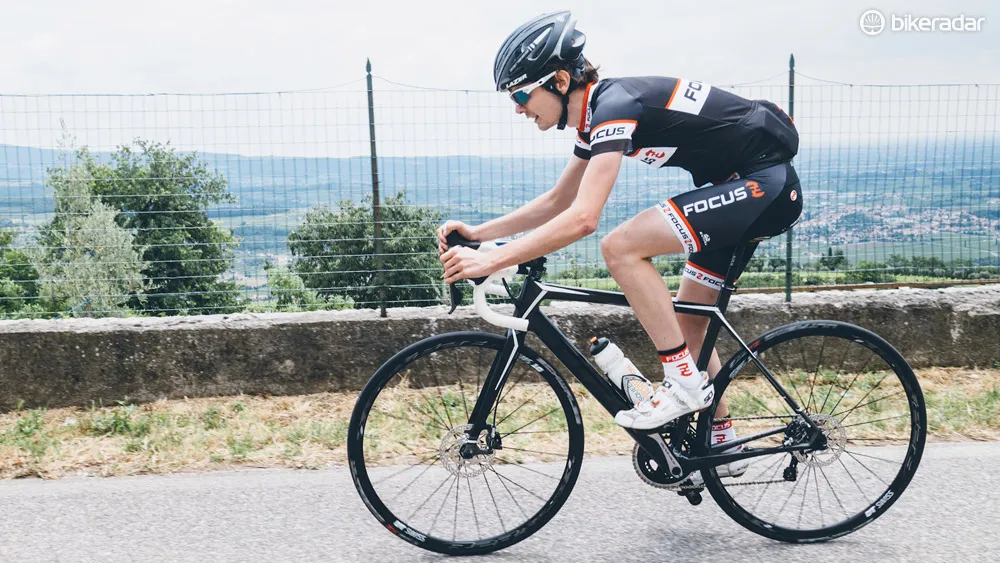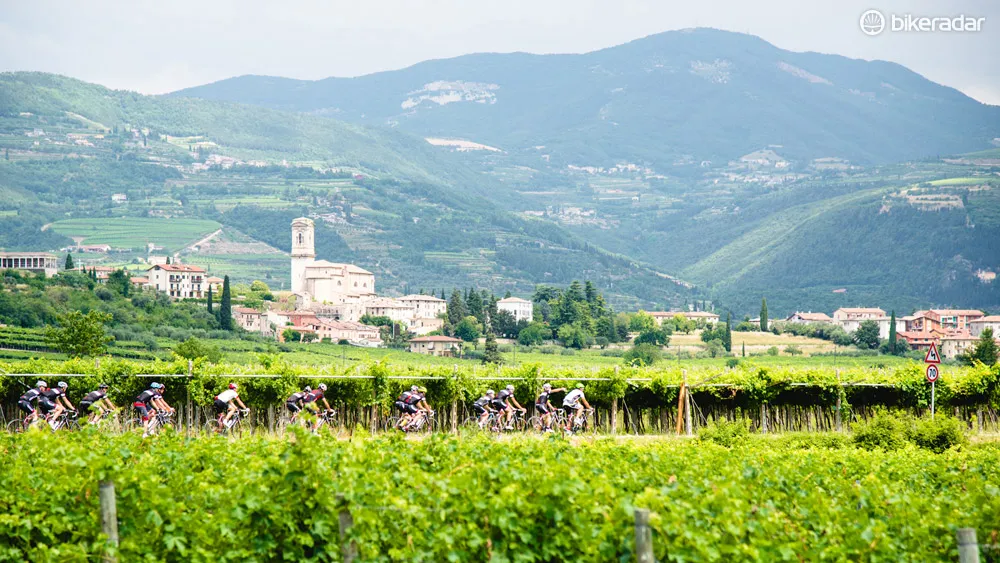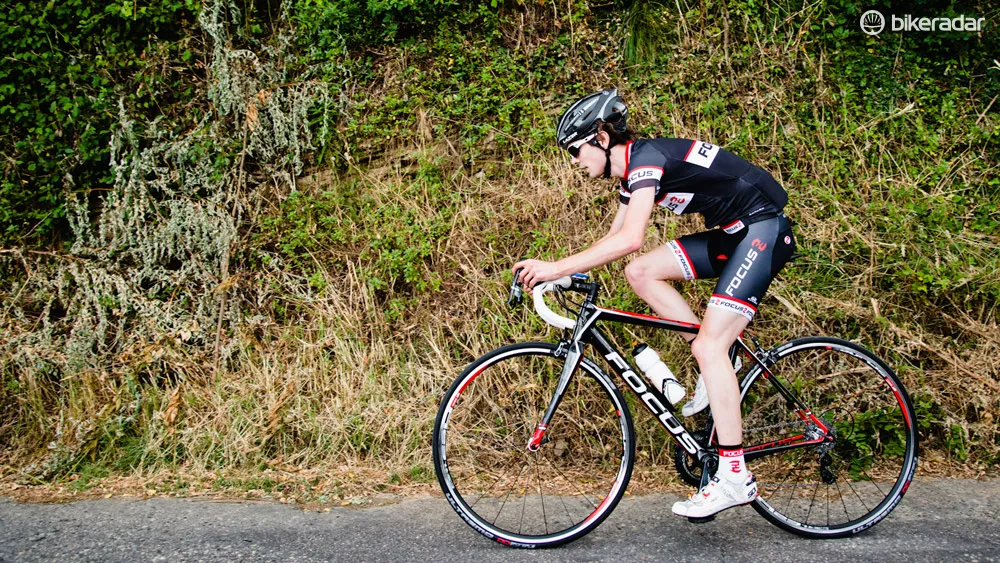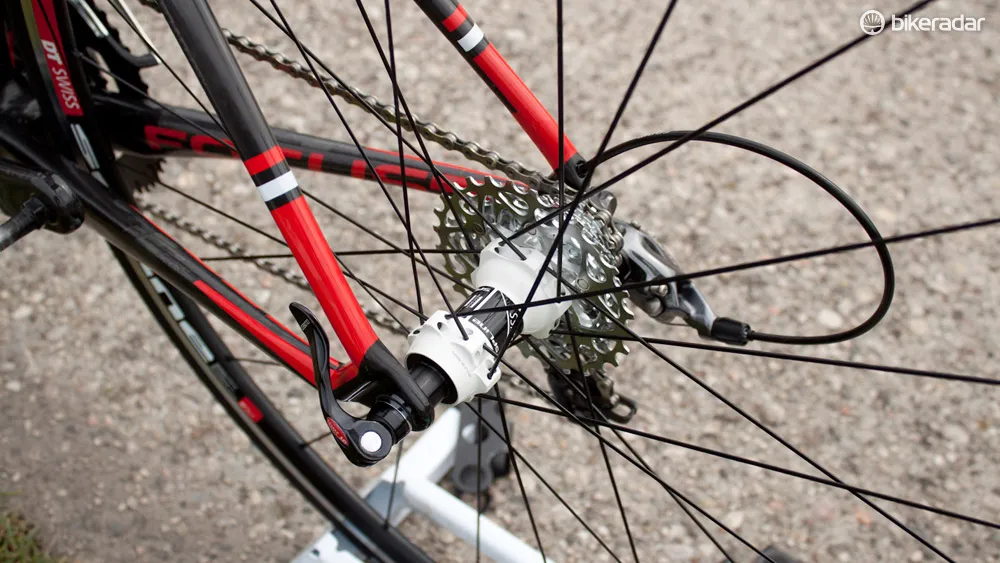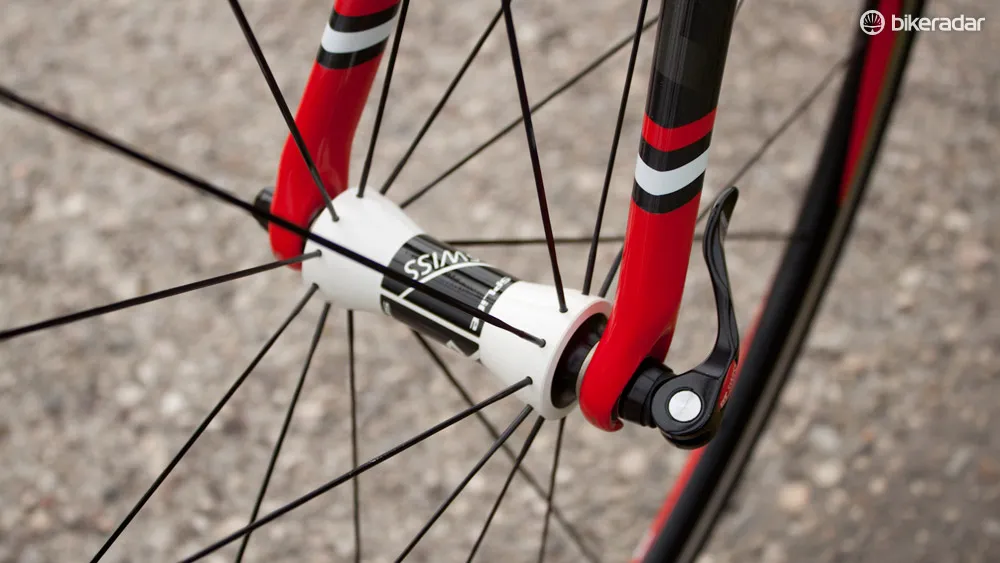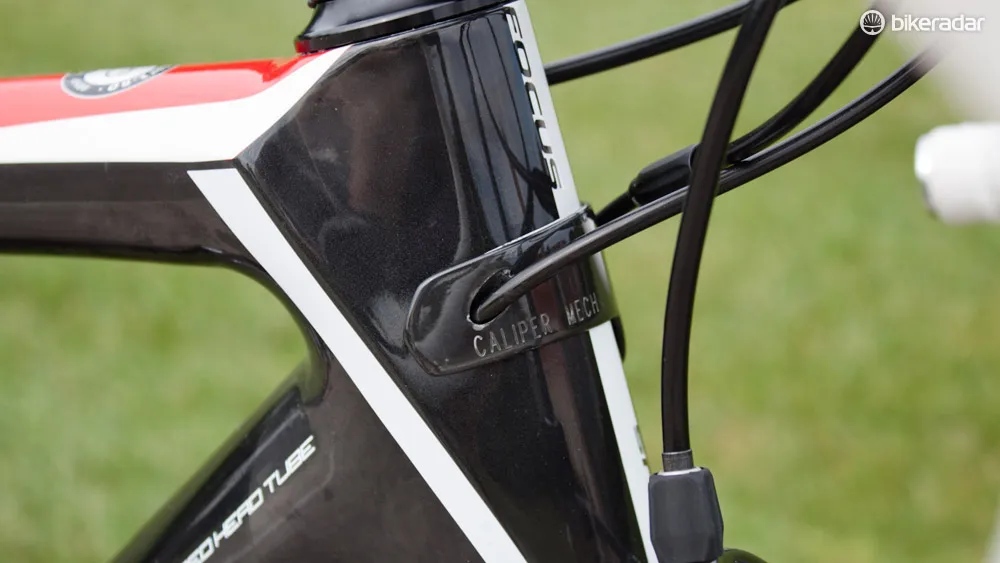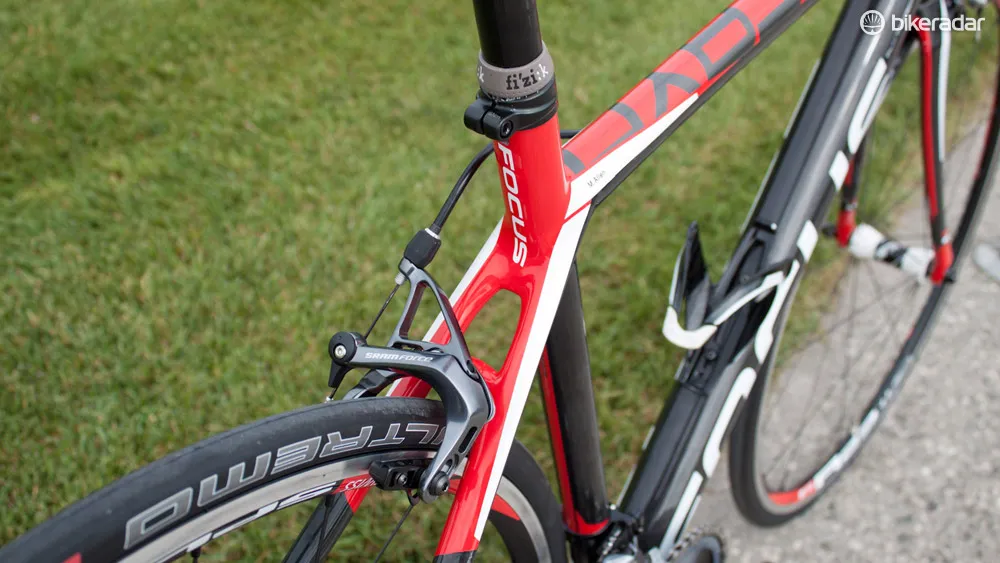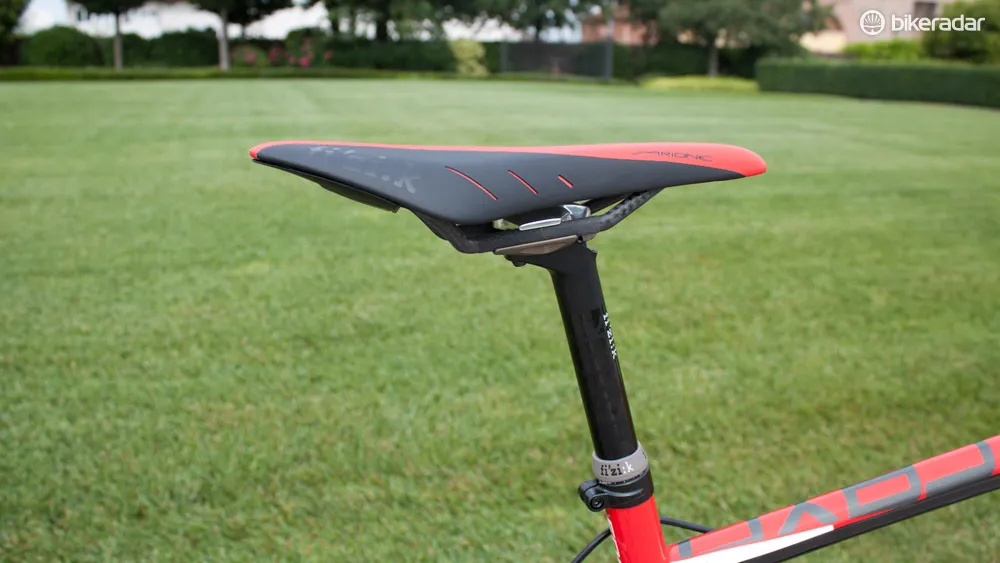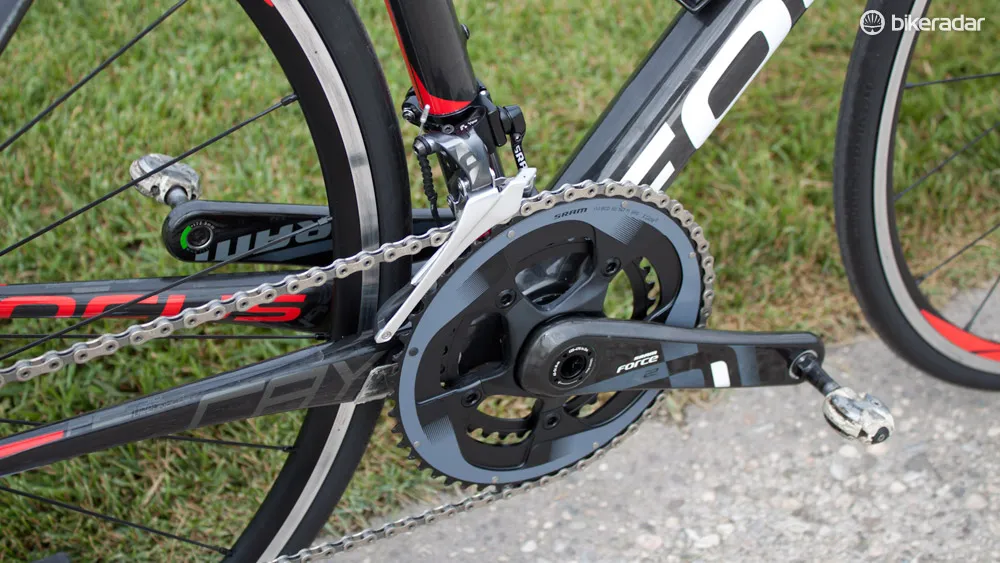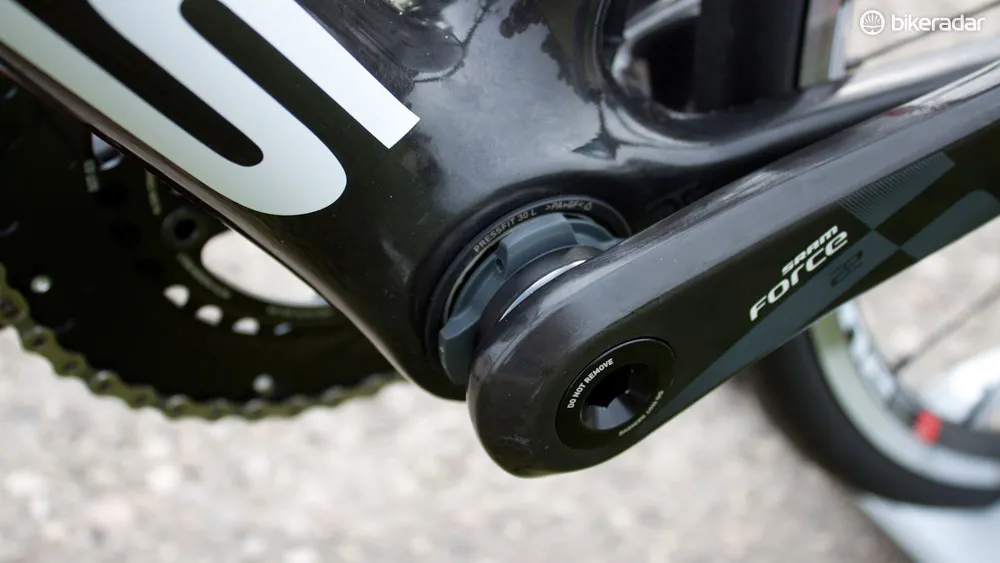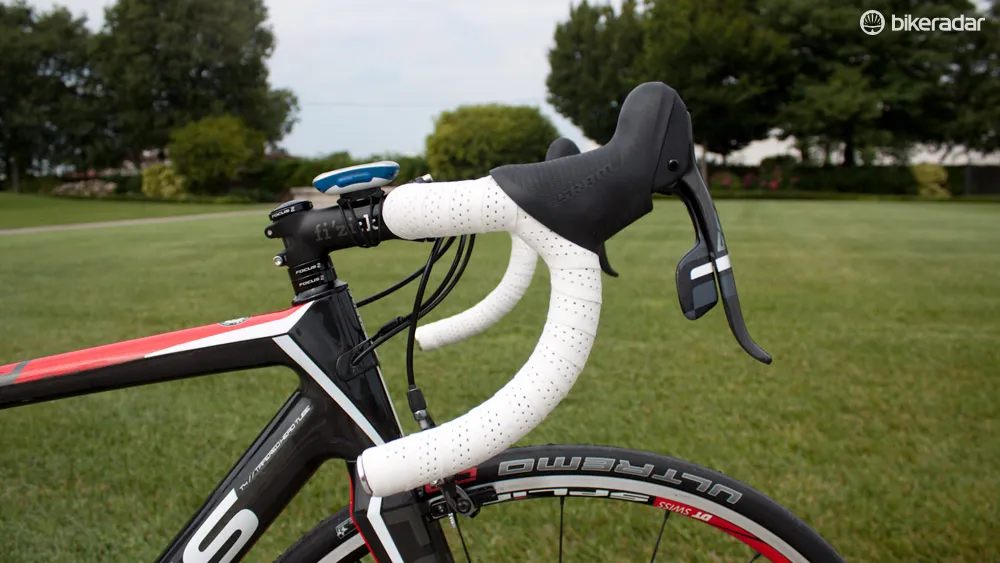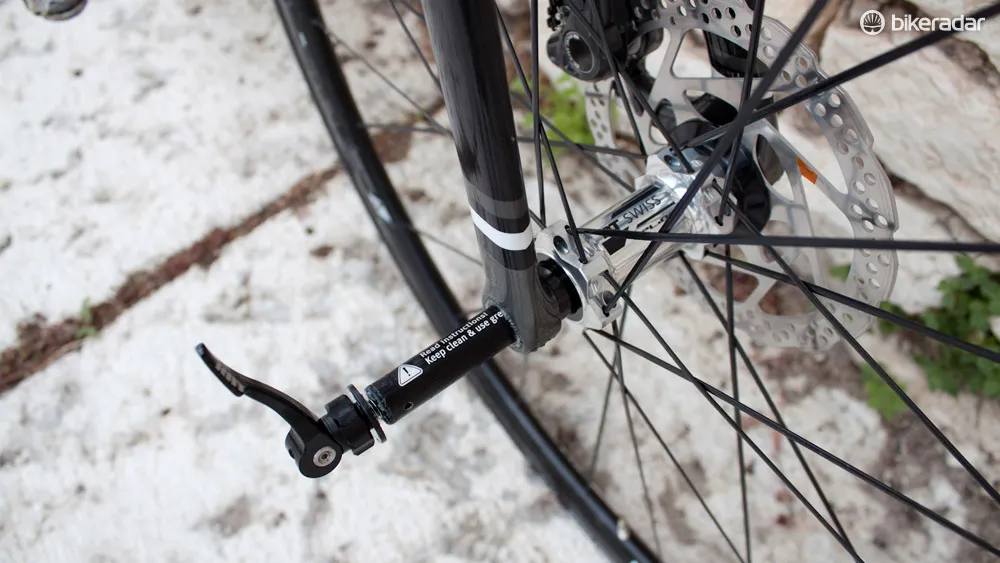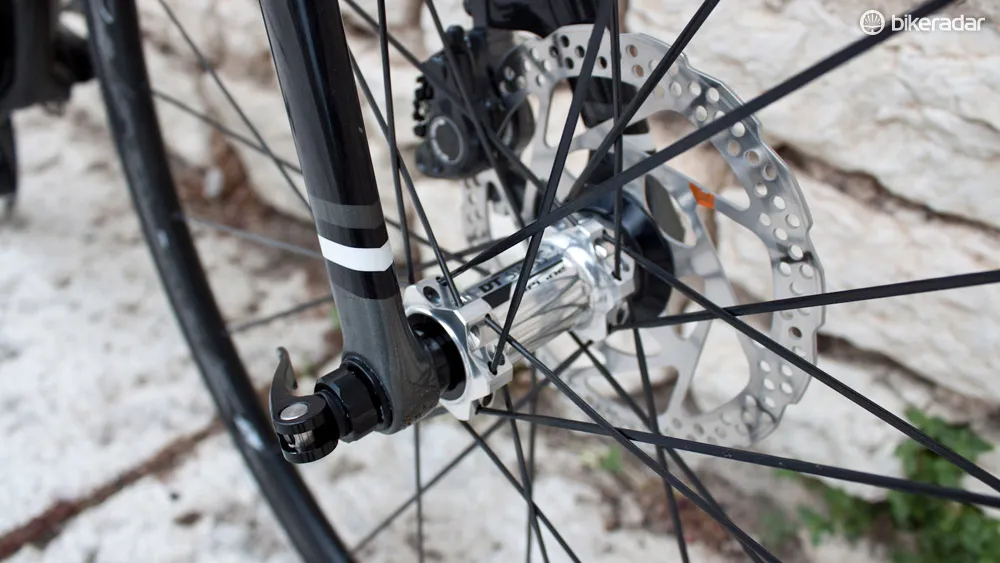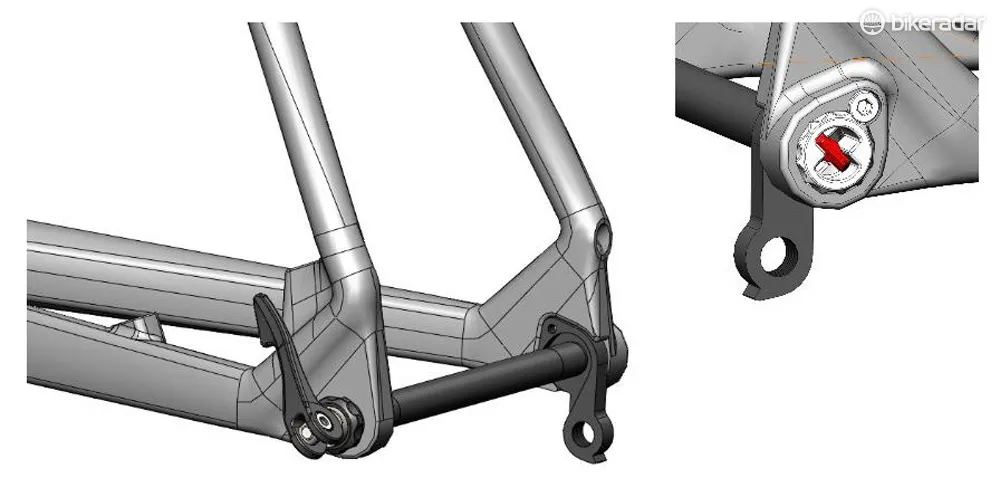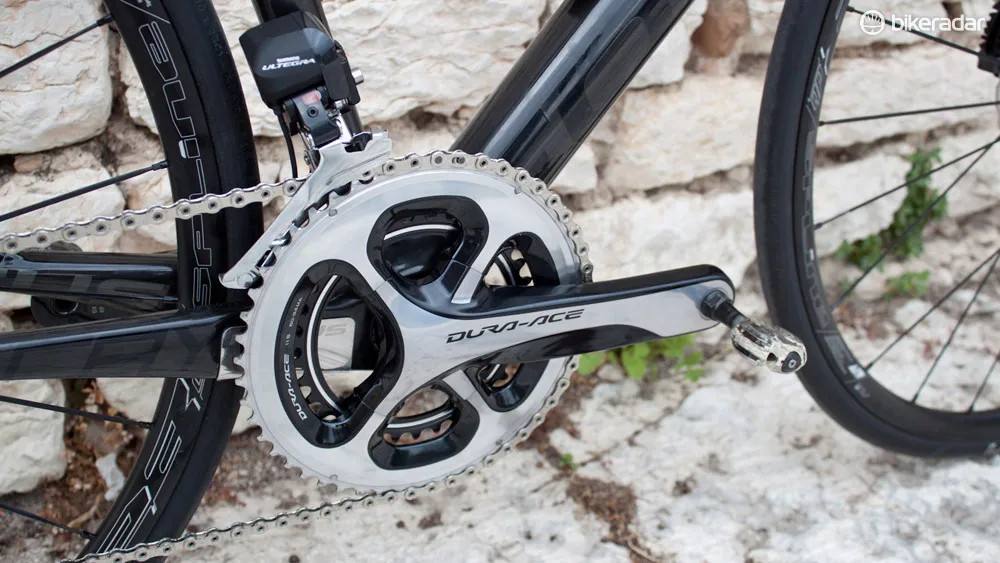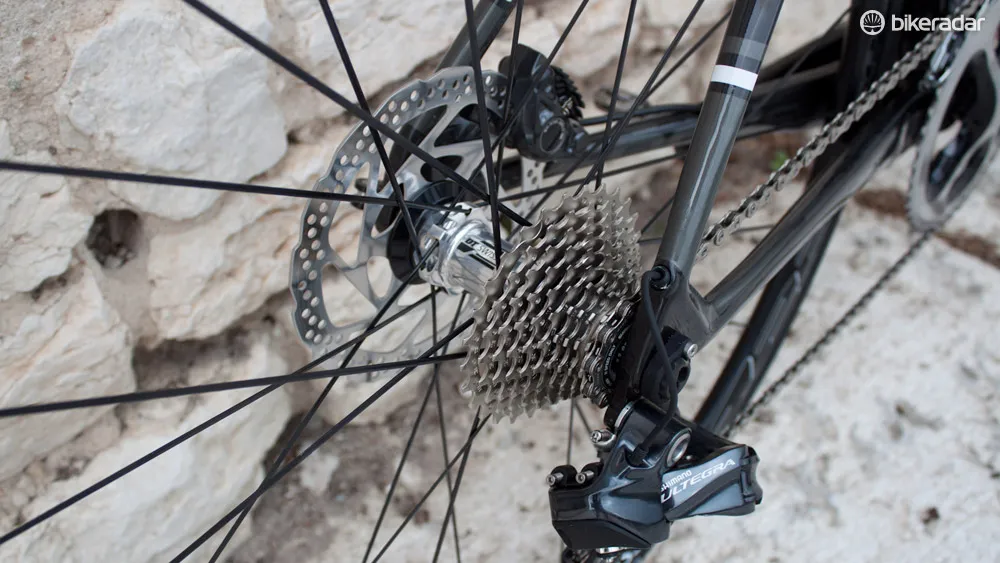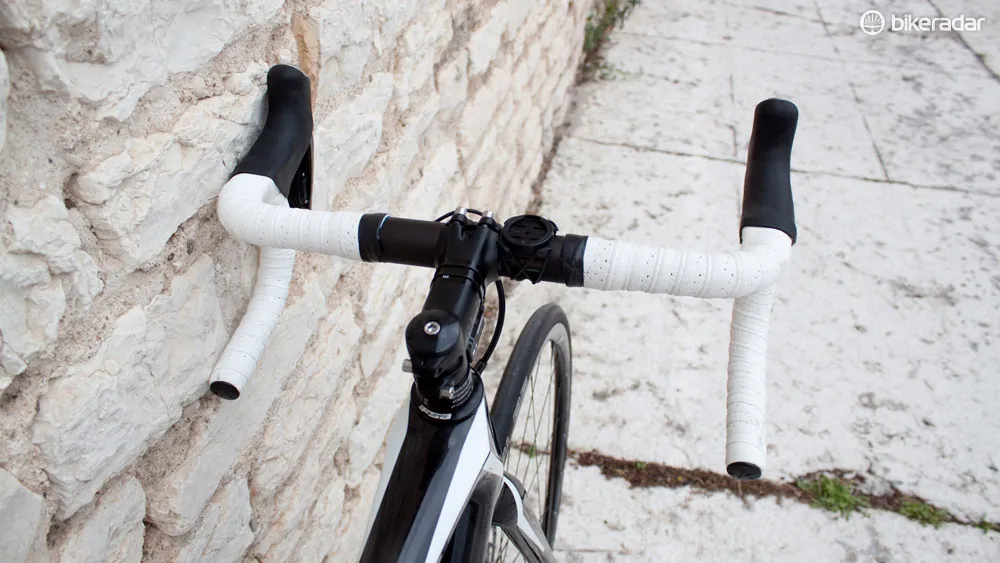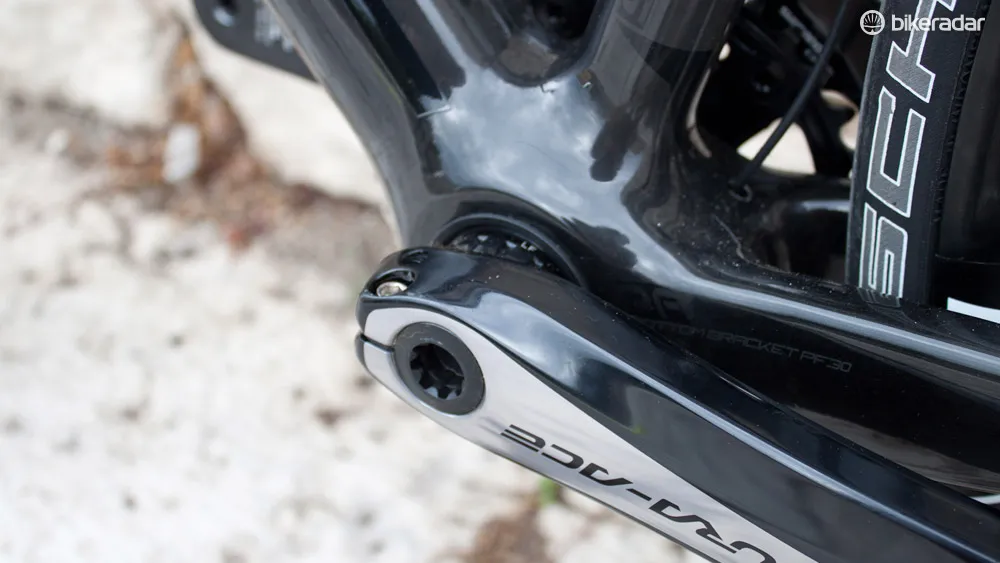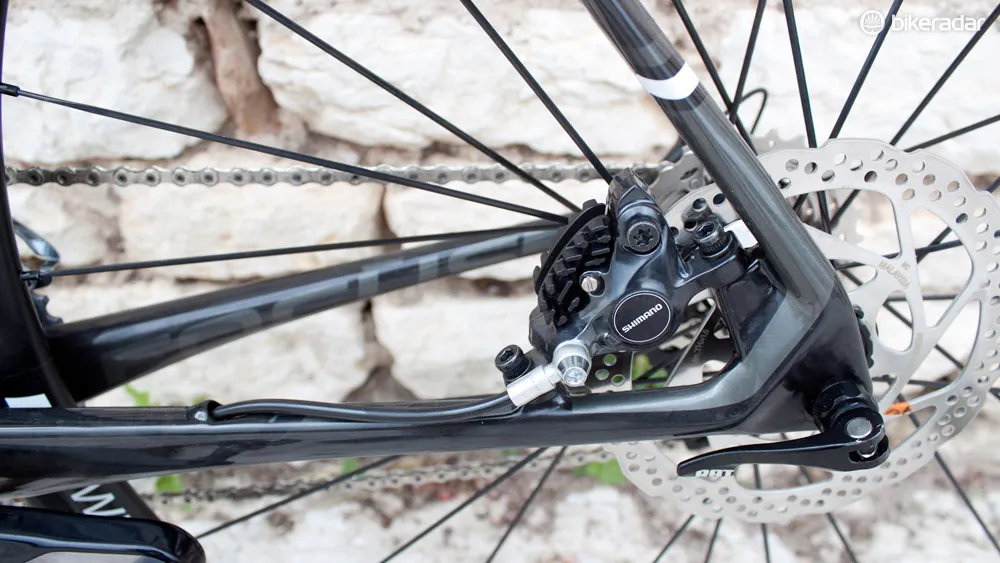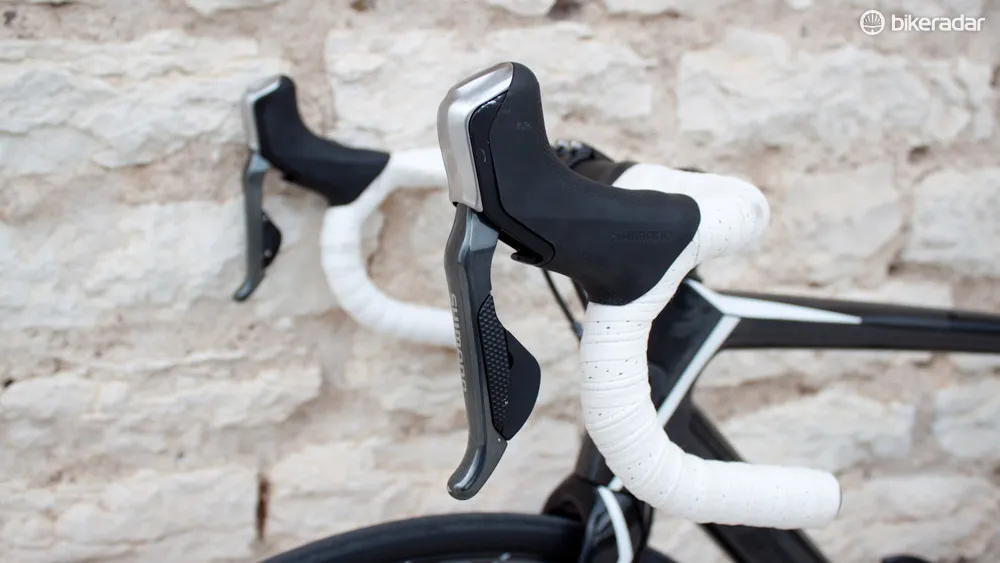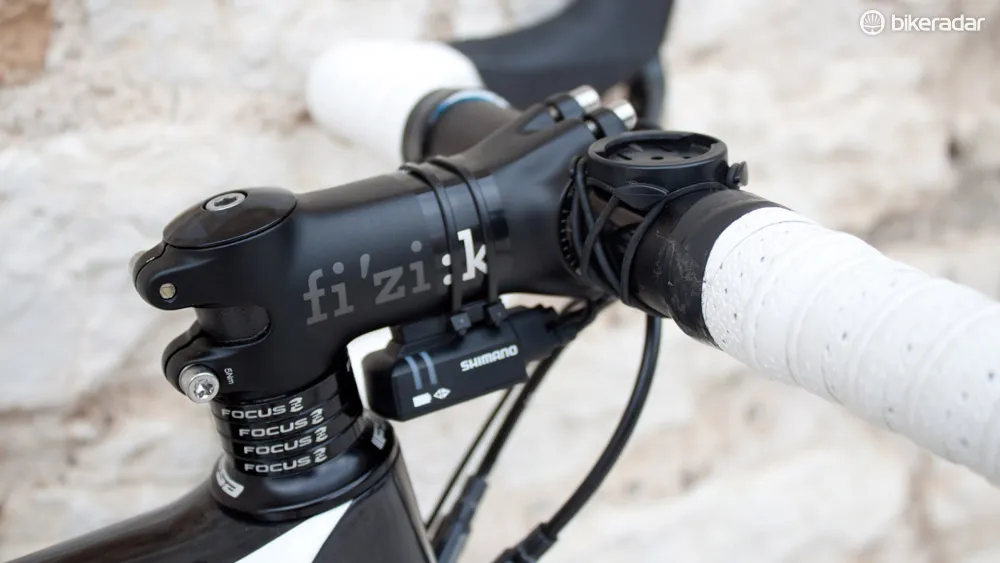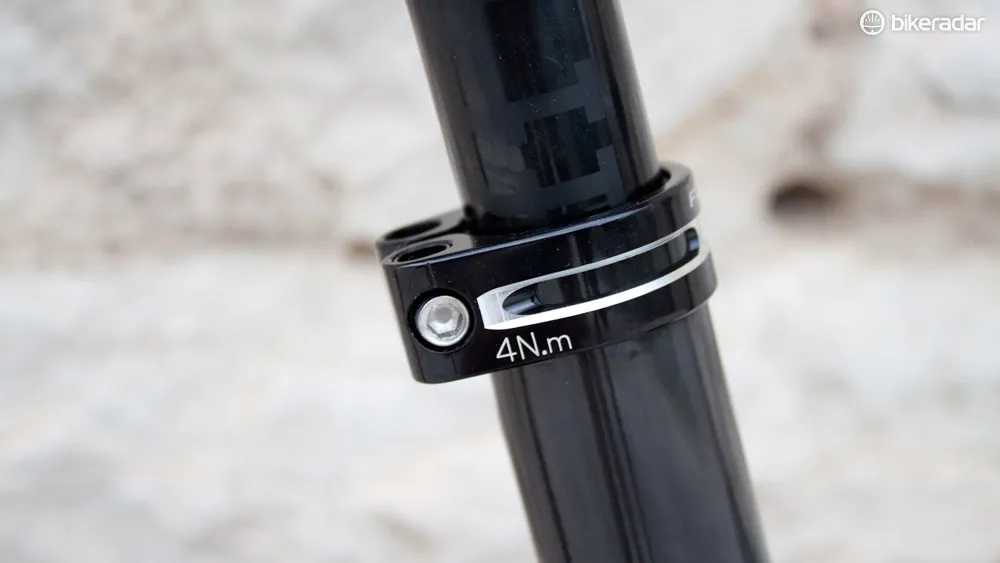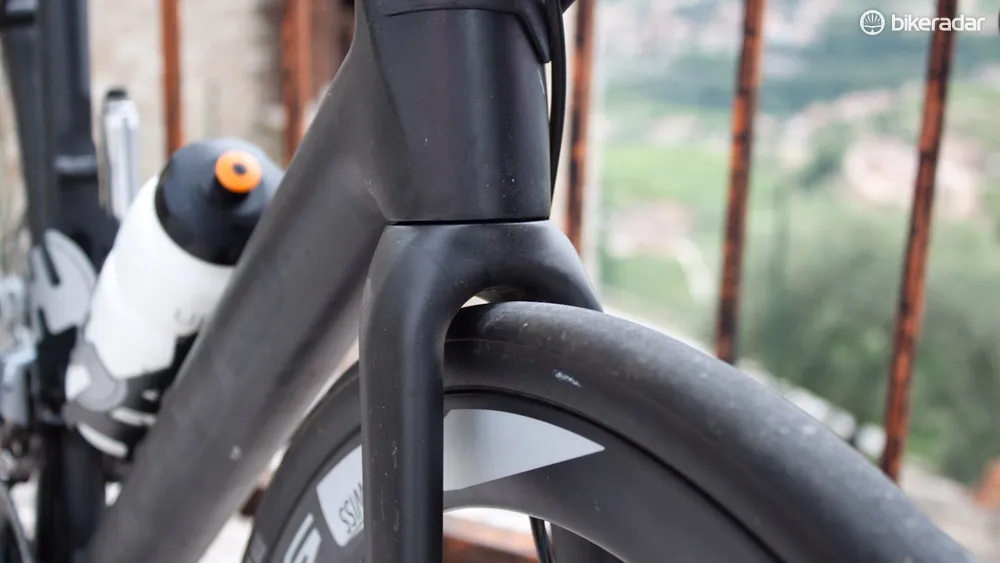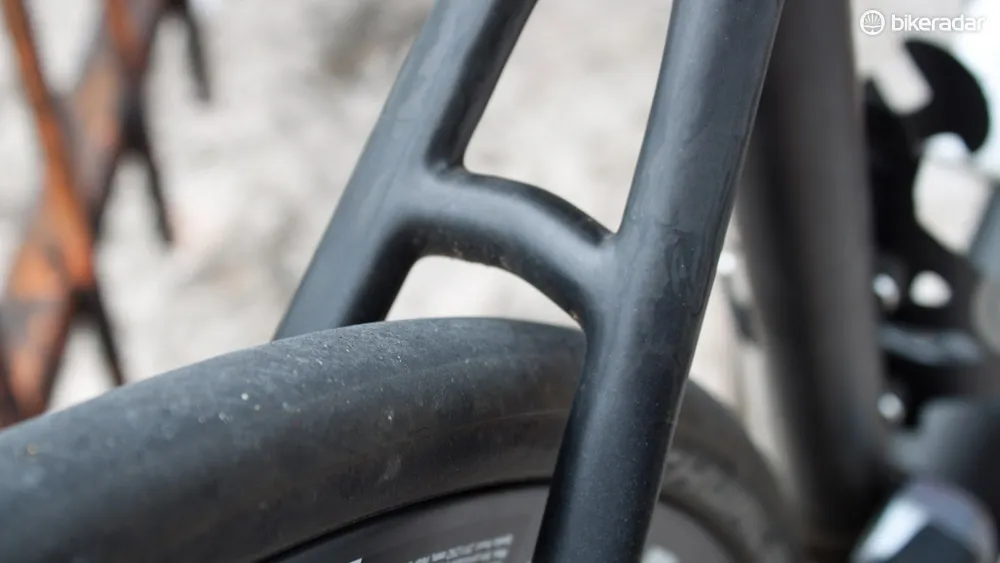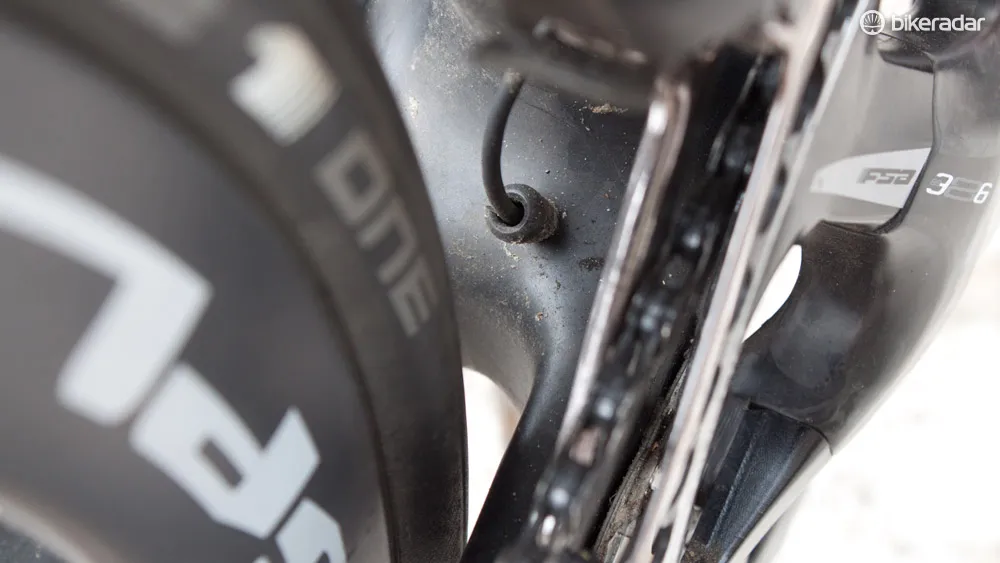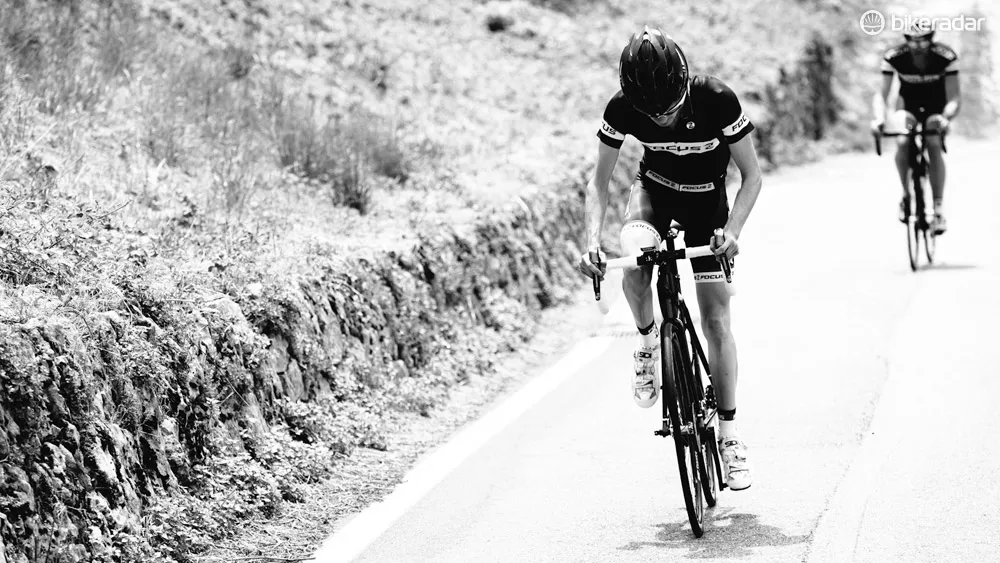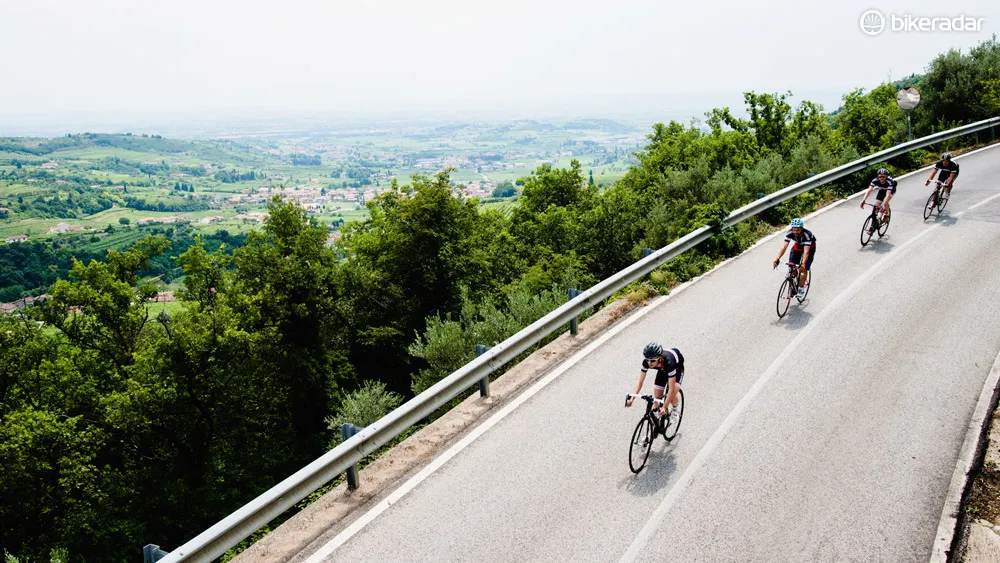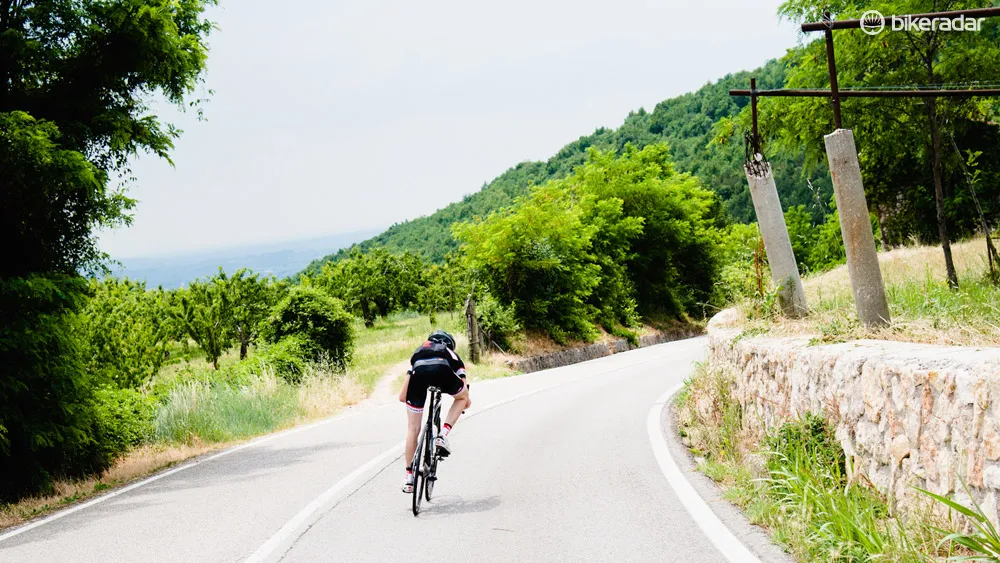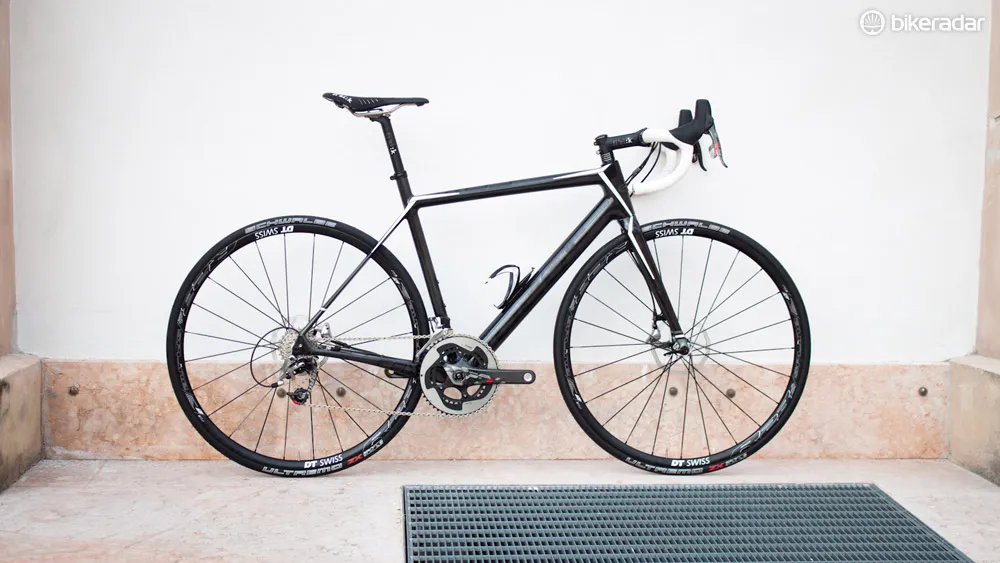The original Cayo, first launched in 2005, was one of the most affordable carbon road bikes on the market. Focus has just announced an all-new version that's available with discs or rim brakes, and we had the opportunity to ride both models back-to-back on the hills around Verona, Italy.
The Izalco Max is still Focus' all-out racer for serious athletes, but the Cayo is plenty racy and was designed to hit an average frame weight of less than 900g – no small undertaking on a bike that is to be priced at the 'mid-level'.
Focus claims to have succeeded in this endeavour, with the average weight across all sizes of the disc frame being 880g, just 20g more than the average for the rim brake version.
The claimed numbers for the fork are similarly impressive – just 380g and 350g respectively – which have been achieved using carbon layups that run uninterrupted from steerer to dropouts, with an integrated bearing seat that requires no separate crown race to interface with the 1 1/4in lower headset cartridge.
Check out more of our Focus 2015 coverage.
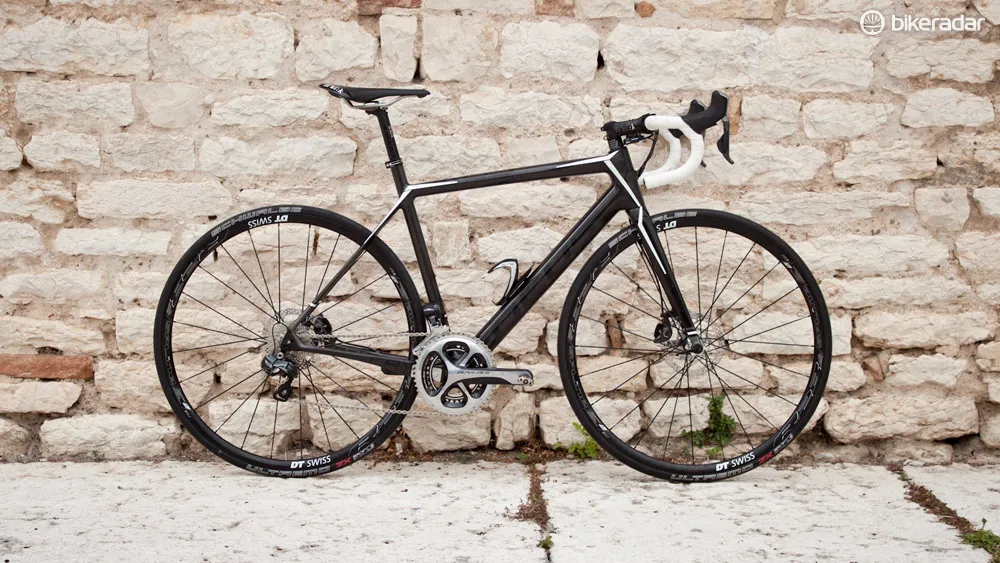
We rode a non-standard disc build, with Shimano R785 levers and brakes, Ultegra Di2 and a Dura-Ace chainset
Frame and equipment: rims or discs, mechanical or electronic – the Cayo's compatible with it all
To keep things simple and offer more options to the rider, the new Cayo frame is compatible with electronic and mechanical gropus. Converting between the two is a simple matter of swapping an insert in the head tube, which Focus calls a CRP, or Cable Routing Plate.
The novelty doesn't stop there. Remember the clever RAT (Rapid Axle Technology) thru-axle design on the Focus Mares cyclocross bike? The disc version of the Cayo gets it too, making for ultra-consistent wheel alignment and a minimum of brake headaches. It's based around a 15mm front axle and a 12mm rear, with a T-shaped end that locks into an insert in the (closed) righthand dropout, and a cam lever much like the one on a conventional skewer. An adjuster accounts for varying hub and frame tolerances.
Once you've got the knack, installation and removal of the RAT is as quick or (thanks to lawyer tabs on forks) quicker than that of a standard skewer.
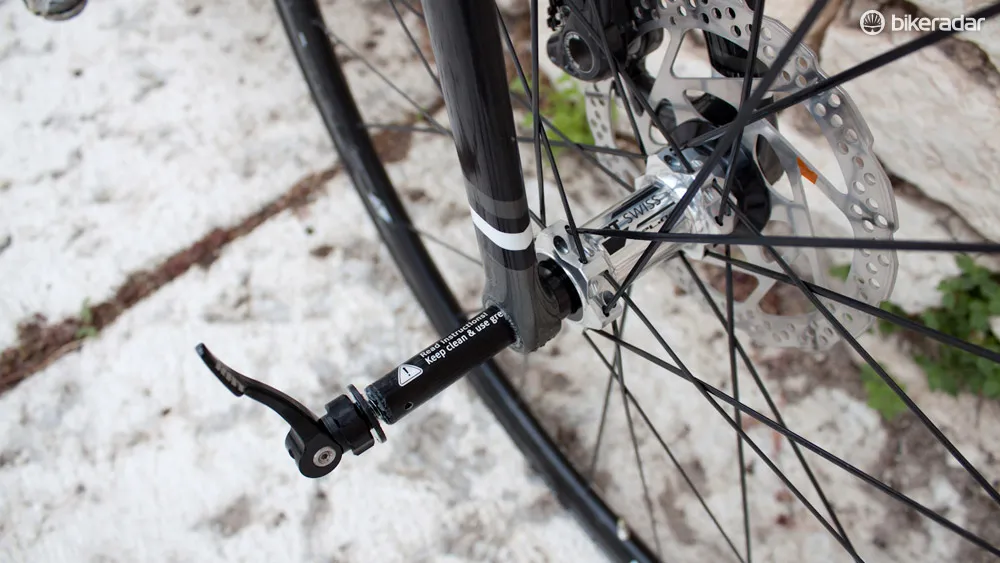
The ingenious RAT thru-axle guarantees disc alignment and is easy and quick to use
Otherwise, the new Cayo is the quintessential modern carbon road bike, complete with an obligatory acronym, SSPS (Stable Stiffness Per Size), which means layups are adjusted across the sizes to reflect the stiffness requirements of different sized riders. It's also got an immense PF30 bottom bracket shell and a top tube that flares radically just before meeting the head tube, all in the interests of targeting stiffness where it's needed most.
The wheelbase of the Cayo Disc is 7mm longer than that of the rim brake version (because of the extra clearance/length needed for the rear discs on the chainstays), and both have room for 28mm tyres front and rear.
The Cayo is available in six rim brake builds, ranging from the £1,399 Cayo 7.0, which has Shimano 105, to the £2,999 Dura-Ace-equipped Cayo 1.0, and two disc brake builds, the Cayo 3.0 Disc (with Shimano Ultegra) and the Cayo 4.0 Disc (with SRAM Rival), £2,399 and £1,999, respectively. All pricing is provisional.
Ride and handling: identical ride quality across rim and disc versions
We tested a rim-brake Cayo with a SRAM Force 22 groupset, and a disc version with Shimano R785 levers and hydraulic callipers, Ultegra Di2 and Dura-Ace 9000 cranks.
Although the latter was a full kilo heavier than the former, the ride quality of both was identical, to the degree that if we were never looked down, we wouldn't be able to tell the difference between them – as long as we kept our hands off the brakes.
Our 51cm Force build was essentially the same spec as the Cayo 4.0, bar slightly lighter wheels that took its weight down to 7.2kg, including pedals. The Shimano-equipped disc version weighed in at around 8.2kg; we weighed a SRAM Red 22 disc demo build at roughly 800g less, which shows what's possible.
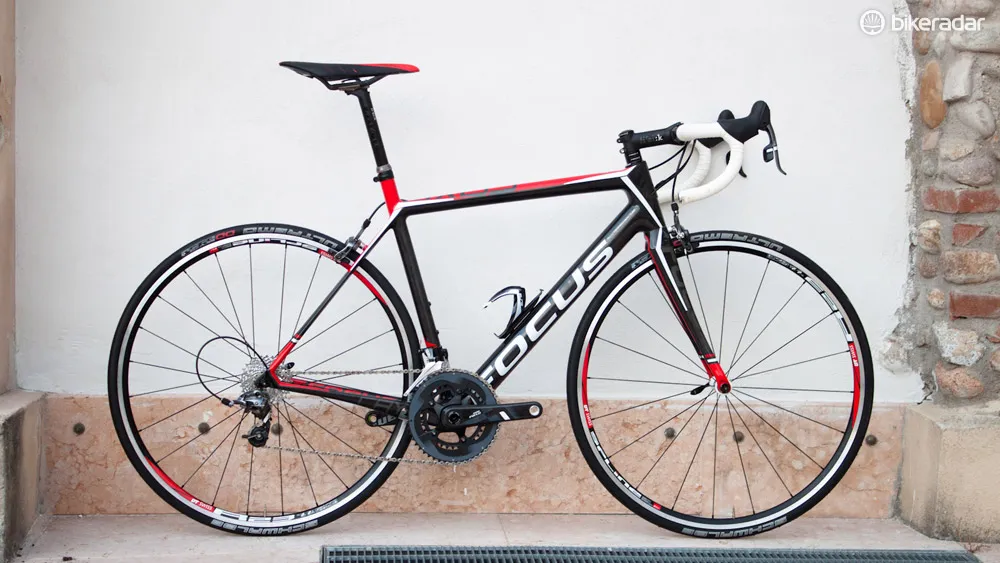
The rim-brake version we rode was essentially a Cayo 4.0, barring the slightly lighter DT Swiss wheels
Focus designed the Cayo around 160mm rotors front and rear, citing research from brake manufacturer Magura, which suggested that the extra heat dissipating abilities of the larger disc could provide a meaningful additional margin of safety. Most bike companies are going with either 140mm or 160mm rotors.
The Focus frame certainly doesn't have the shock-absorbing qualities of a pure endurance machine, but even with the tyres inflated to an excessive pressure, the ride was quite acceptable.
Italy's roads aren't quite as bad as the gravelled moonscape of the average British lane, but we're confident that sensible pressures and tyres that took maximum advantage of the frame and fork clearances would satisfy the needs of most – we've certainly come some way from the days of Germanic boneshakers built for perfect continental tarmac and high test-lab scores.
The Focus is quite stiff under power too and, with reasonably aggressive geometry (our 51cm frame had a 537mm top tube, 130mm head tube and a 72 degree head angle), there's a palpable sense of liveliness. Both climbing and descending are a pleasure.
Our first impressions being extremely positive – our only real regret is that both versions of the frame lack any provision for mudguards despite the ample room on offer, which would have elevated the Cayo from the position of a rather good bike to an outstanding one.
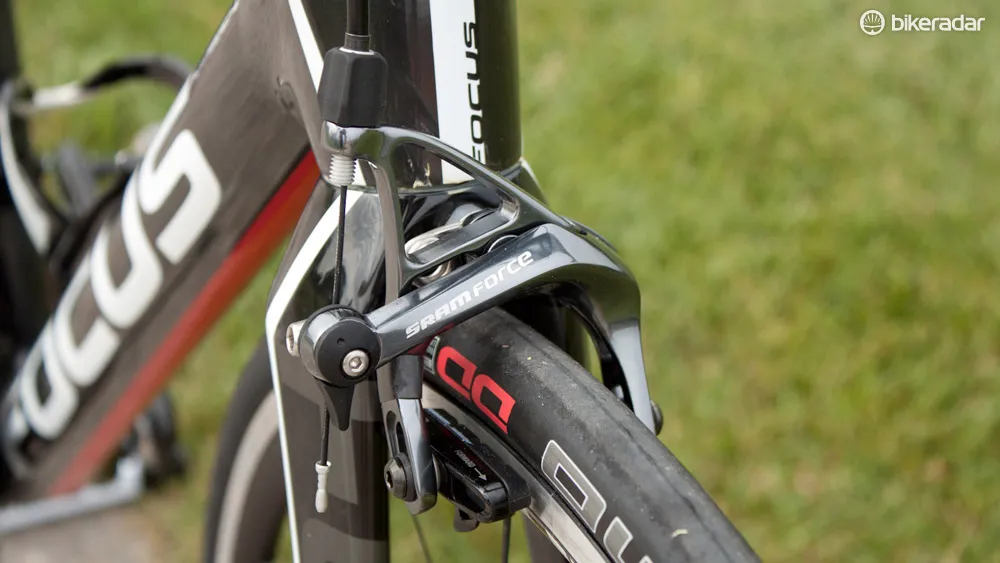
There's plenty of room under that brake for large tyres
Specs as tested
Disc build:
- Frame: Cayo P2T carbon
- Fork: Izalco P2T Carbon T4 Disc
- Stem: Fi'zi:k
- Handlebar: Fi'zi:k
- Brakes: Shimano R785
- Front derailleur: Shimano Ultegra 6870 Di2
- Rear derailleur: Shimano Ultegra 6870 Di2
- Shift levers: Shimano R785
- Cassette: Ultegra 6800 11-28
- Chain: SRAM Red 22
- Crankset: Shimano Dura-Ace 9000 50/34
- Wheels: DT Swiss R23 Spline
- Tyres: Schwalbe Ultremo ZX
- Saddle: Fi'zi:k Arione
- Seatpost: Fi'zi:k Cyrano
- Bottle cage: Elite
- Weight as tested: 8.2kg
Rim brake build (essentially the Cayo 4.0, with lighter wheels):
- Frame: Cayo P2T carbon
- Fork: Izalco P2T Carbon T4 Disc
- Groupset: SRAM Force 22
- Cranks: SRAM Force 22
- Handlebar: Fi'zi:k Cyrano R5
- Stem: Fi'zi:k Cyrano R5
- Saddle: Fi'zi:k Arione R7
- Brakes: SRAM Force 22
- Wheels: DT Swiss R23 Spline
- Tyres: Cayo P2T carbon
- Weight as tested: 7.2kg
